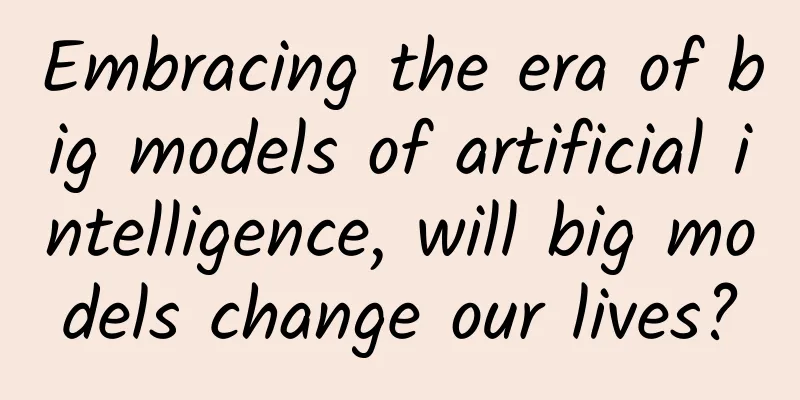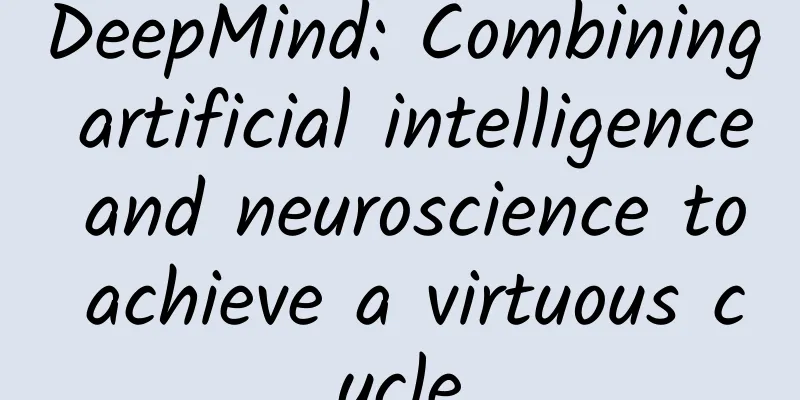The Essence of Gravitation

|
The concept of gravity Gravity is the interaction between two particles, and is the driving force that accelerates the two masses towards each other. It originates from the properties of the mass of matter. History of Understanding Gravitation Universal gravitation was first proposed by Newton. Newton believed that universal gravitation is the force between two mass points. Any objects with mass have a force of attraction between them, that is, universal gravitation. It is expressed by the formula: F = GMm/R², where R is the distance between the centers of mass of the two objects. The effect of gravity is a super-distance effect. This attraction between massive objects is not only a force between all objects, but also the transmission of this attraction is instantaneous. Later, Cavendish measured the universal gravitation constant G using the Cavendish torsion balance and proved the law of universal gravitation. However, with the continuous progress of science, Newton's concept of universal gravitation has become inconsistent, such as the cause of super-distance action, the upper limit of the speed of light, the precession of Mercury, etc. In order to make the theory more perfect, Einstein further improved the concept of universal gravitation in the theoretical form of general relativity. General relativity believes that gravity is just a geometric property of four-dimensional space-time, and it is the manifestation of the curvature of space-time by the mass of matter, that is, universal gravitation refers to a geometric effect of matter on the curvature of space-time. The gravitational relationship between matter and space-time is Einstein's field equation: Rμυ - gμυR/2=8πGTμυ/c^4. This equation is relatively complicated. The simple understanding is the relationship between the distribution of matter and its state of motion and the curvature of space. This relationship tells us that the above geometric properties cause space to bend due to objects, and objects move along geodesics due to the curvature of space. At the same time, the scientific community proposed that gravitons are particles that transmit universal gravitation, and that the gravitational force between two objects is the gravitational field transmitting universal gravitation through gravitational waves. In other words, universal gravitation is the graviton transmitting the gravitational force between two objects through waves. However, on the one hand, gravitons have not been found yet; on the other hand, although the gravitational theory of relativity is more perfect than the concept of Newtonian gravity, it also has unsatisfactory aspects, such as the singularity problem, quantum gravity problem, dark energy problem, etc. In order to better understand the universe and everything, there may be more perfect theories that will appear and travel at the top of the scientific building in an active state. However, relativity is still highly scientific within a considerable range. New understanding of gravity The general theory of relativity corrected Newton's gravitational defects, but it was relatively implicit in its explanation of the operating mechanism of gravity. Neng Ziyuan would like to express it here based on what he has learned. The article is superficial and only briefly expresses personal views. 1. The Nature of Gravity Although Newton's theory of gravity has its flaws, the magnitude of gravity is related to the mass of objects and the distance between them, which is inevitable. Whether it is as small as a particle or as large as a black hole, the greater the mass and the smaller the distance, the greater the gravity between objects. This is beyond reproach. Although Einstein's general theory of relativity is not satisfactory, it is also a fact that mass causes the curvature of space-time, and the curvature of space-time causes objects to move along geodesics. Although gravitons have not been found, and existing theories may have different assumptions about the properties of gravitons, and the mechanism of gravitons transmitting energy may also need to be revised; but I believe that the existence of gravitons is also an inevitable event in gravity. Combining these factors, gravity can be expressed as: the mass of matter causes the curvature of space-time, which creates a tendency for matter to approach each other. The mass of the approaching tendency allows objects to obtain gravitons and force them to accelerate. This is the essence of gravity. Gravity is the interaction between all masses, which manifests as attraction. Whether it is caused by the curvature of space-time or accelerated by capturing gravitons, it originates from mass and is a property of mass itself, but this property has some effect and a role of force, so it is not only a performance of mass, but also a force between objects. To say it is a performance refers to an object itself; to say it is a force refers to the relationship between one object and another object. Because Newton said that force is the interaction between objects. Gravity is the interaction between objects with mass, no matter what form this mass exists in; no matter whether this effect is a geometric effect, or whether it involves particles, or whether it is caused by other factors, it is actually the interaction between two objects, so gravity is an attractive force. 2. Gravitational Mechanism Since gravity is a force between massive objects, how does it work, that is, what is the mechanism of gravity? First, the space-time effect At the beginning of the universe, matter existed only in the form of energy, and there was only energy in the space-time of the universe. With the continuous development and expansion of the space-time of the universe, mass appeared in the universe, that is, matter appeared in the space-time of the universe in the form of mass. Matter appeared in the universe in the form of mass, and was distributed in various places in the space-time of the universe in the form of various objects, causing the space-time of the universe to bend to varying degrees. The greater the mass of the object, the greater the degree of curvature of the material space. On the other hand, objects walk along geodesics between two points in space. In Euclidean geometry, the line segment between two points in the same plane is the shortest, that is, the line segment is a geodesic, so a freely walking object must walk along the length of the line segment. Space-time curved by mass is non-Euclidean geometry, where the plane is bent, and the geodesic there is also compressed into a curved line, that is, space-time with mass is a curved space-time, where there is no plane. Therefore, the geodesic that an object walks in a curved space-time is a curved geodesic. Therefore, general relativity believes that gravity is a space-time geometric effect. Second, the quality of the source Universal gravitation is a space-time geometric effect. Two objects with mass approach each other in curved space-time, and both of them accelerate in the process of approaching. The greater the mass of the two celestial bodies, the more curved the space-time around them; the closer the two celestial bodies are, the more significant the curvature effect of the system space. In this way, universal gravitation will naturally become more obvious, and degenerating into Newton's theory, it is the perfect embodiment of the expression F = GMm/R². Therefore, the greater the mass of the two particles, the smaller the distance between them, and the greater their universal gravitation. Even if this expression is flawed in the framework of relativity; but under the same external environment conditions, the greater the mass of the two objects and the smaller the distance between them, the greater their universal gravitation, this conclusion is an indisputable assertion. Although universal gravitation has a geometric effect, this geometric effect comes from mass and the magnitude of gravity is related to mass, so it comes from mass; and because there is energy exchange in the gravitational process, it is not limited to geometric effects, it is essentially a property of mass. There is energy exchange in the gravitational effect, which should also involve the exchange or transfer process of particles. Let's think about it. Under the action of universal gravitation, both objects accelerate; if in the framework of relativity, their masses are also increasing. Whether it is an increase in speed or an increase in mass, the total energy of matter has increased. Where does this energy come from and how does it come? These two questions must involve the transformation of energy and the movement of particles. Third, particle mechanism Under the action of universal gravitation, the energy of the two celestial bodies is constantly increasing. This energy must be transferred from other places, otherwise the law of energy conservation will fail in gravity. In order to simplify the research problem, we now record the two celestial bodies as A and B, and then completely isolate the system they are in from the rest of the universe. In this way, A, B and the spacetime they are in become an isolated system with no relationship with the outside world. There are three kinds of matter in this isolated system, they are planets A and B, the AB gravitational field and the spacetime energy field where AB is located. Under the action of gravity, the energy of A and B has increased. According to the law of conservation of energy, the increased energy comes either from the AB gravitational field, the AB spacetime energy field, or the composite field of the two. It should be explained here that the gravitational field is the energy field caused by AB; while the spacetime energy field is the energy field of the material spacetime itself. Even if there is no AB, this field still exists, but it may change a little, and the spacetime energy field often exists earlier than the celestial bodies and planets. Now suppose that the increased energy of AB is converted from the reduced energy of AB's gravitational field, and this conversion process requires a propagation particle to complete, which is called a graviton. Otherwise, when there is gravity, the energy of one place will reach another place out of thin air and be converted without any propagation particles; but when there is no gravity, this will not happen. It is unimaginable that when there is gravitational energy, it is converted without the need for gravitons to propagate, and when there is no gravitational energy, it is not converted. It can be concluded that gravitons carry the energy of the gravitational field, and then transmit it to A or B, and then convert it into the speed (kinetic energy) or mass of A or B. In this way, under the action of gravity, the energy of AB increases, and the system potential energy of AB decreases, and the reduced potential energy is exactly equal to the increased energy (the total of kinetic energy and mass energy). The above is just an assumption, because the increased energy may also be converted from the energy of the space-time energy field or its composite field. But no matter which case it is, the conversion mechanism is similar, and the transferred particles can be called gravitons. In the process of action, potential energy is converted into the energy of the object (this potential energy, whether it is gravitational potential energy, space-time potential energy, or composite field potential energy, can be simply referred to as potential energy). According to the nature of matter, any matter has the dual nature of wave and particle, so the energy transferred by gravitons in the system field is wave-like, and the transfer process is also time-sensitive. Modern scientific theory shows that gravity is transmitted at the speed of light, and the timeliness of gravitational transmission is directly related to the performance of gravitons. When the performance of gravitons is clarified in the future, the nature of the transmission of gravitational speed will naturally be clarified. We put the AB system back into the large spacetime of cosmic matter. Although the large spacetime is related to the small system (the exchange of matter and energy), the mechanism of gravity will not fail due to the return of matter. In summary, the essence of gravity can be described as follows: gravity is a mass-energy effect of material space-time. It originates from mass, is formed in the curvature of space-time, and completes energy transfer through gravitons. Its effect is that two masses accelerate to approach or even merge into one, or a large mass celestial body collapses continuously. All rights reserved by Nengziyuan. Violators will be prosecuted! |
<<: Do you rely on "shivering" to keep warm in winter? 5 heater reviews to keep you warm in winter~
>>: What impact does collective narcissism have on society?
Recommend
2020, a survival guide for marketing departments
Today’s content is about the iteration of the mar...
iOS13.5 performance test: Do 5 old iPhones run faster after upgrading?
Apple has officially launched the official versio...
2021 Jiebao linkage system course "Leopard Brother Short-term Practical System Course" and "Jiebao Trading System Advanced Edition" video + handouts
2021 Jiebao linkage system course "Leopard B...
Excellent case study sharing: How was the cost of information flow advertising reduced by 75%?
With the implementation of the housing purchase r...
Passenger plane crashed due to bird strike, experts explain: Could it have been avoided?
On the 25th local time, an Azerbaijan Airlines pa...
How to make a good toilet paper that won’t clog the toilet and isn’t easily torn?
You probably use up to 50% of the toilet paper in...
Dalian home improvement mini program agent price inquiry, how much is the Dalian home improvement mini program agent price?
What is the price of Dalian home improvement mini...
A comprehensive review of the development of China's large aircraft
May 5, 2017, Shanghai Pudong Airport. This is one...
This smell is really "nan"! The heather flower, which is on the hot search list, is actually full of treasures
There is a popular saying: "If you can't...
Instagram-style scroll view source code download
Functional classification: Other Supported platfo...
The secret to quickly increase followers on a public account!
The ideal of many Internet newcomers is how to re...
How to do offline pre-installation promotion of "Deepin" APP and what to pay attention to!
The operations uncle said: This article shares wi...
Making web pages, writing copy, pattern design, code development... Can GPT-4 replace me at work?|Base Construction
In the Iron Man movie series, there is an impress...
15 marketing techniques, essential for marketing promotion!
Many years ago, Shi Yuzhu, the legendary marketer...
Five major factors and optimization methods for Toutiao information flow advertising conversion
The main reason that affects the conversion rate ...









